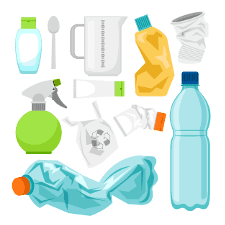
A biodegradable, edible film made with plant starch and antimicrobial compounds may control the growth of foodborne pathogens on seafood, according to a group of international researchers.
“We have the ability to develop a film with antimicrobial activity that can kill foodborne pathogens on food surfaces,” said Catherine Cutter, professor of food science, Penn State. “Given the recent outbreaks that we have seen with a number of food products, coming up with something that can be used by the industry to kill microorganisms on the surfaces of food is a noble area of research to investigate.”
Seafood may be contaminated with bacterial pathogens, such as vibrio and salmonella. Vibrio naturally occur in marine environments, and salmonella can contaminate seafood during production or processing. Both types of bacteria are linked to gastrointestinal problems when consumed. Because both types of bacteria can survive long-term freezing conditions, the contamination of these bacteria is a concern for the seafood industry.
Freezing does not kill bacteria. However, when freezing food, ice crystals can form from the water in food. The ice crystals, Cutter says, can act like “daggers” and pierce the bacterial cell wall, causing damage to the cell.
“Vibrio and salmonella are somewhat susceptible to freezing,” said Cutter. “So, if you treat bacterial cells with antimicrobials and then freeze them, the approach can be more lethal.”
The researchers from Thailand used a blend of thermoplastic starch, a biodegradable polymer made from cassava — tapioca powder, and a gelatin coating containing antimicrobials known as Nisin Z and lauric arginate (LAE).
The team of researchers in Thailand then created a “culture cocktail” of the bacteria and inoculated slices of tiger prawn and big-eye snapper. The experimentally-inoculated seafood samples were tested using different compositions of Nisin Z and LAE to see which variations would give the “best kill.” After dipping the samples into the edible film composed with antimicrobials, some of the slices were vacuum packaged and chilled for up to a month, and other samples were frozen for 90 days.
“If you just dip shrimp into any antimicrobial — it’s not going to stick very well,” said Cutter. “But if you put the antimicrobial into an edible film, and then dip the shrimp into the film and pull it out, that film is going to form around the shrimp. The film then releases the antimicrobials over time.”
Cutter emphasizes the importance of a “controlled release” of the antimicrobials over time in order to get the “maximum kill,” which is made possible by the edible film’s unique properties. Applying just the antimicrobials directly onto the food products would result in the antimicrobials dripping off or diluting.
“If you’re going to make an edible film, you want to make a film that has similar properties to plastic,” said Cutter. “You want these edible films to be transparent because consumers aren’t going to buy something they can’t see, you want them to be flexible, and you want the film to mold to the food product. By using edible films, you are doing it in a way that is biodegradable.”
Cutter said a big challenge that the food industry faces is reducing the reliance on plastic packaging, something the food industry has been using for the past 40-50 years.
“How do you get the industry to change something they and consumers are so used to using?” said Cutter. “This research demonstrates, through proof of concept, that antimicrobial edible films work. So how do we get this type of packaging into a commercial application? That’s the next logical step in the progression of this type of research.”
Learn more: Biodegradable, edible film kills pathogens on seafood
The Latest on: Biodegradable and edible film
[google_news title=”” keyword=”biodegradable and edible film” num_posts=”10″ blurb_length=”0″ show_thumb=”left”]
via Google News
The Latest on: Biodegradable and edible film
- The Best Movies and Shows on Hulu Right Nowon May 13, 2024 at 5:00 pm
We’ve handpicked the finest movies and television shows currently streaming on Hulu in the United States. Take a look. By Jason Bailey Sign up for our Watching newsletter to get recommendations ...
- Film Clubon April 25, 2024 at 7:51 am
By Jeremy Engle and Michael Gonchar How to use our weekly Film Club feature to teach close reading and critical thinking skills via an eclectic mix of nonfiction videos. By Jeremy Engle ...
- What is Terrific Scientific DIY?on April 17, 2024 at 12:47 pm
Dan Walker: Mine's going off at a slightly jaunty angle. John Torode: Bread sticks. Biodegradable and edible at the same time. Presently he's looking a little bit wonky, but I'm confident.
- Breaking plastic’s grip on produceon April 17, 2024 at 2:00 am
In a March survey among produce professionals on LinkedIn, the shift to biodegradable ... being turned into film that can be used like cellophane, or made into bags. An edible coating made from ...
- Is Castile Soap Good Or Bad For Fertilizing Your Plants?on December 16, 2023 at 3:33 pm
That's because castile soap is a "true soap," meaning it is made from all-natural, vegetable fat-based, and biodegradable ingredients ... in a dusty white or gray film. You can also just use ...
- School of Film and Animationon March 22, 2023 at 5:34 pm
The School of Film and Animation is where the timeless art of filmmaking meets cutting-edge technology. It’s a creative community that allows students to explore their talents in the art of filmmaking ...
- Film Festivalson March 13, 2021 at 6:51 pm
Your guide to film-festival fashion and red-carpet arrivals at Cannes, Sundance, Toronto International Film Festival, Tribeca Film Festival and Venice Film Festival. Learn the latest film-festival ...
- Food: Is biodegradable cling film any good?on January 31, 2021 at 8:59 pm
The shift to a more eco way of living often starts in the kitchen, so how effective is Lakeland's new biodegradable cling film? Ella Walker finds out. The war on plastic is undoubtedly ramping up.
- Five amazing biodegradable inventions that could potentially replace plasticon September 30, 2020 at 3:39 am
Biodegradable and, in some cases, edible food packaging is nothing new. But what if you could eat your water bottle? Several labs have developed a type of flexible, transparent sachet designed to ...
- Harrow Half Marathon to use edible water bottleson September 14, 2018 at 5:00 pm
Organisers are hoping the new biodegradable and edible seaweed water sachets will help cut down on plastic waste in marathons. Lucy Ashe, winner of the 2017 Harrow Half Marathon, said the sachets ...
via Bing News











